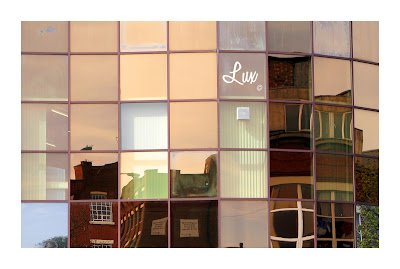© All rights reserved. This photo is the property of S.M.McTavish. If you wish to purchase it please contact me at smmctavish@gmail.com
Perspective is a wonderful thing.
From Berlin.de:
"Berlin’s Holocaust Memorial, located in Mitte on a stretch of the former “death strip”, where the Wall once stood near the Brandenburg Gate, is Berlin’s stunning monument to the Holocaust, dedicated to the Jewish victims of the Nazi genocide of World War II. Impressive in its awesome grey soberness, rather than sombreness, it includes an underground Ort der Information (Information Centre) located on the south-eastern side of the memorial grounds, accessible via two flights of stairs or a lift.
The 800sqm Information Centre complements the abstraction of the memorial with personal documentation about individuals and families. This includes biographical details, recordings and information about memorial sites throughout Germany and Europe. Documenting the universal issue of genocide, the centre represents a central focus on the diverse memorial sites across Germany which stress the living memory aspect of remembrance. In Berlin an examples of this is the Stolpersteine (tripping stones) initiative – plaques on street pavements, usually outside the house’s main entrance, commemorating deported Jewish residents.
It took 17 years for the Memorial to be completed in Berlin. Its foundation stone was a Bundestag resolution passed on June 25, 1999 to erect a Memorial to the Murdered Jews of Europe. This was followed by years of discussion and deliberation, until the Monument was completed on May 8, 2005. US architect Peter Eisenmann conceived the winning design consisting of 2711 rectangular blocks of concrete laid out in grid formation, recalling tombstones. The monument is open day and night and it is possible to walk through the concrete slabs at one’s own pace. Visitors are not allowed to climb on them though, something which is particularly hard for younger visitors and small children to resist. The effect is that of inner dislocation in a destabilising maze as the ground is uneven and the blocks vary in height and size. An ideal setting for quiet contemplation."







